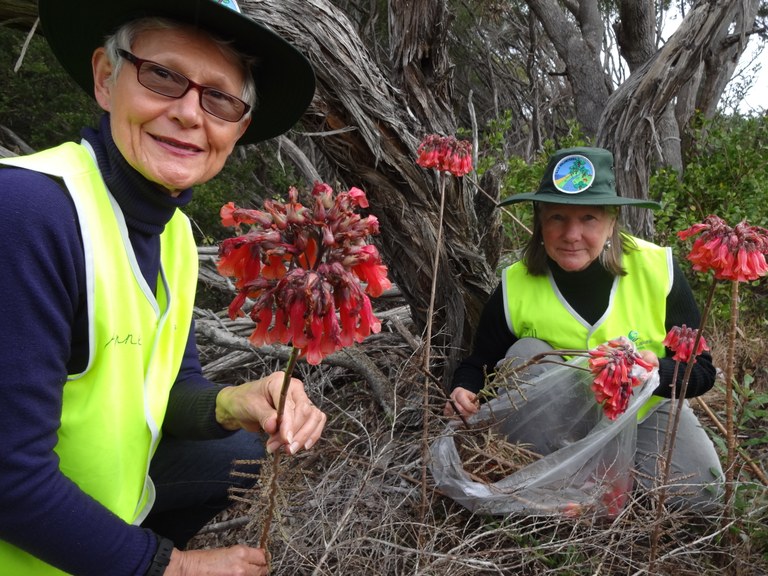
Mother-of-millions
Winda Woppa, Hawks Nest
Mother-of-millions
Bryophyllum species
The name “mother-of-millions” may conjure up images of comfort and caring, but this red-flowered ornamental plant is a real killer.
Not only is it poisonous to people and pets, but it constitutes a serious risk to stock, as poisoned cattle die of heart failure.
The toxins are present in all parts of the plant, though the red, bell-shaped flowers are five times more poisonous than the leaves and stems.
Mother-of-millions are in flower now, through to October.
In one sense, mother-of-millions is a very apt name for this Class 4 Noxious Weed. Each plant can produce hundreds of seeds that can survive in the soil for a number of years. The plants reproduce from seeds, leaf, stems and root fragments.
When the fragments fall to the ground - dropped during control efforts or spread via mowing or slashing - they put down roots and re-establish as new plants.
One of the photos is of a road verge in the Hawks Nest area shows the potential for mother-of-millions to form dense communities and spread into bushland, probably from seeds or plant parts inadvertently brought in on machinery, blown off a trailer or deliberately dumped as green-waste.
As a Class 4 Noxious Weed in the Mid Coast area, the plant must be managed to continuously stop its ability to spread. It must not be sold, propagated or knowingly distributed.
To control mother-of-millions, it is best to hand-pull plants, using gloves. All plant parts should be bagged and placed in the red bin.
Although individual plants are easy to remove, infestations are difficult to control due to the ability of all plant parts left behind to re-shoot.
Follow-up weeding is a must, as seeds and dropped plant parts will otherwise quickly re-infest the site.
Once removed, the infested area should be revegetated with more desirable plants to provide competition to future mother-of-millions seedlings and plantlets. If it is in your garden perhaps think about planting Australian natives such as Christmas Bell, Midgen Berry, and Westringia.
Reference
Taken from the Weed Bulletin emails
To subscribe email Helen.kemp@greatlakes.nsw.gov.au
Adrienne Ingram
Hawks Nest & Tea Gardens Bitou Busters.




